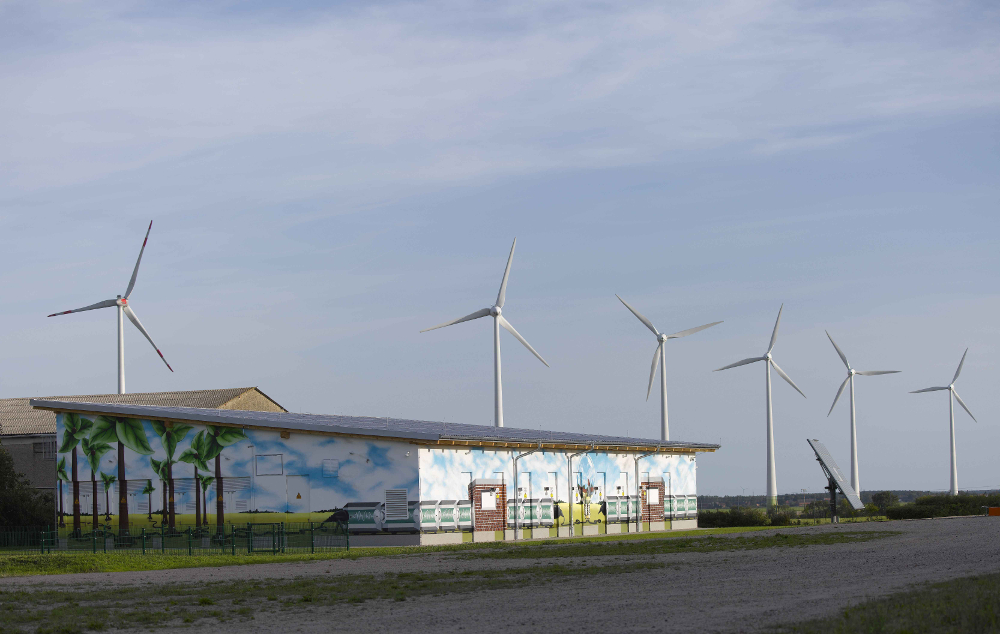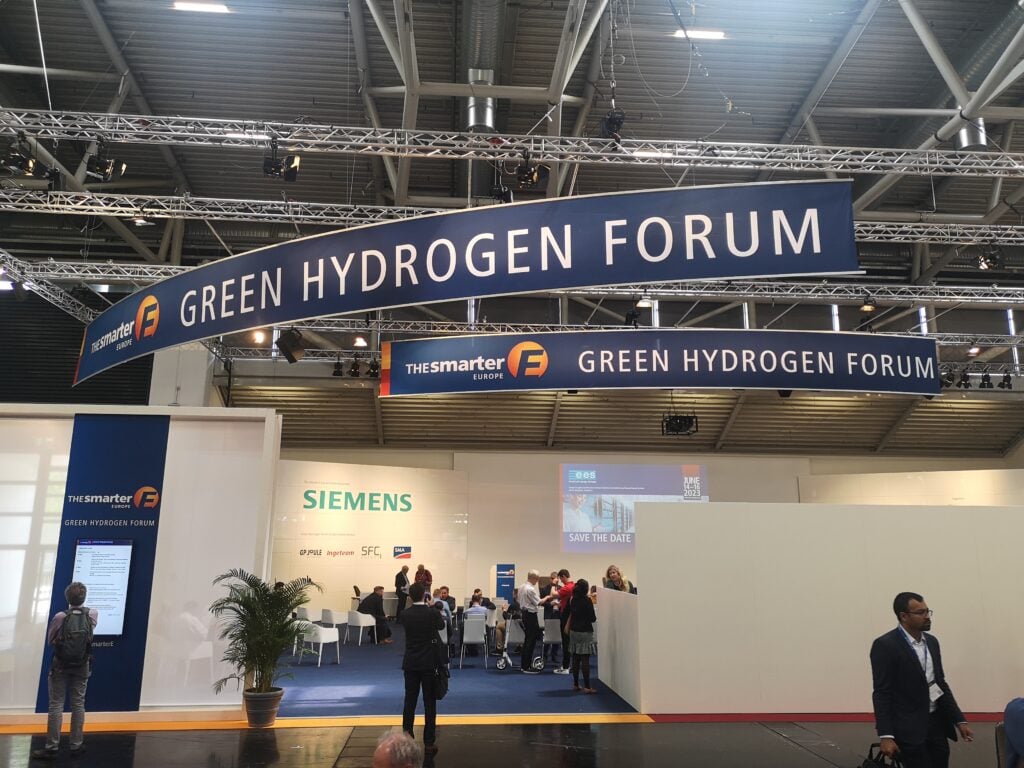
Europe’s policymakers appear to have a blind spot when it comes to energy storage and its role in the transition away from fossil fuels.
While climate change remains the major existential crisis of our times, there is also an immediate crisis facing the European Union’s energy sector: its reliance on Russian fossil fuel imports.
Enjoy 12 months of exclusive analysis
- Regular insight and analysis of the industry’s biggest developments
- In-depth interviews with the industry’s leading figures
- Annual digital subscription to the PV Tech Power journal
- Discounts on Solar Media’s portfolio of events, in-person and virtual
REPower EU, the policy strategy which largely targets the end of dependence on Russia for fuels and has been in the making since March following Russia’s invasion of Ukraine, was published in its draft form yesterday by the Union.
In contrast to a leaked version of the draft which Energy-Storage.news was able to see last week, the proposal does include some explicit mention of the role of energy storage, as noted in our coverage.
However, it is likely to still fall short in ambition, given the vagueness of its treatment of the various technologies – it says the EU recognises the importance of electricity storage and will encourage its development, for example, but does not go into specifics in the way that it does for say, solar PV or hydrogen.
We hear from Patrick Clerens, secretary general of the European Association for Storage of Energy (EASE), a tireless and longstanding advocate for energy storage in all its forms, why a coherent strategy to enable a massive rollout of energy storage is required to enable the rapid growth of renewable energy.
As noted in our news story last week, EASE and its members have modelled the need for energy storage in the European system and found that 190GW will be required by 2030, equivalent to 14GW a year of new installations, in a market that installed less than a gigawatt during 2021.
It has to be said that at last week’s ees Europe trade event in Munich, Germany, and in wider conversations with various industry experts and participants, Energy-Storage.news has heard optimism on the prospects for the energy storage industry in Europe. However, this growth in market-based demand does not yet correlate to the massive push forwards that EASE and many others say needs to come from strong policy leadership.
EASE and other groups have made an urgent call for the inclusion of energy storage in the RePower EU plan. Energy storage, whether electrochemical, mechanical or thermal, has been absent from discussions to date and is not covered in detail. Why is this so important?
In RePower EU, the main aim is to wean ourselves off Russian gas, to limit Russian gas imports, and in the midterm to diversify completely away. That’s a decision of the European Commission.
They also see that we have a lot of indigenous energy sources, which are renewable energy sources, and we’ve seen that these sources are being curtailed. Now the commission is calling for more renewables, but we know that the grid cannot flow (due to congestion). So, it’s not possible at the same [required] speed.
The only way we see to make this happen is to have a massive rollout of storage devices to avert curtailing.
The way renewables were rolled out was very clear. There was a target set for renewables, there was a support mechanism put in place to achieve these targets, and this rolled out renewables, reduced prices and created an environment of suppliers, of researchers, for it [the industry] to have its own infrastructure around it.
We need to go to the same level for energy storage: we need to set targets, we need to make sure we can achieve those targets. And these targets must be based on the rollout of renewable energy.
A lot of studies for the moment talk about storage only being needed in 2040.
But there are two flaws to these studies. The first flaw is that they rely on gas peakers to balance the system, all of them. The European Commission had foreseen 80% of balancing coming from gas in their own assessments. So that’s not working anymore, we don’t want this anymore. And it’s not fitting with the higher [decarbonisation] targets.
And that’s the second part: the EU’s Fit for 55 plan targets 55% carbon emissions reduction by 2030, higher than the previous 50% target. It doesn’t seem a lot, this 5%, but the low hanging fruits have been used, every percentage point is more painful now. So, it is a huge challenge to get this 5% more. You therefore need to avoid a curtailment of renewable energy sources, to increase the consumption of renewable energy sources.
While curtailing renewables, you will not manage to achieve the targets. Using gas peakers you will not achieve to on one side reduce CO2 emissions and [on the other side] wean us off imported gas.
We are speaking to each other at ees Europe, the electricity storage trade show, which has grown immensely in the past few years, just as the Intersolar Europe PV show did before it. Do you think this lack of inclusion for energy storage is just a reflection of the earlier stage of development that the industry is still at? Or is there fundamentally something missing from the approach of EU policymakers?
If you have an energy system which is projected to not need storage, you don’t need to push it. But now, since this shift happened, we see that we need storage, and we are lacking the mechanism to roll it out.
And we need to create a comprehensive energy storage strategy on a European level with the EU Member States. Look at the National Energy and Climate Plans and see how storage can be pushed up there. That’s really what you [need to] do, have a comprehensive integrated strategy on energy storage. Without this we will not meet the target for the renewables, we will not manage to wean ourselves off imported gas.

We are seeing some momentum for growth in European energy storage, although as you say, not on the level that’s needed. Recently we’ve seen Greece set an ambitious 3GW by 2030 deployment target, and financial support for storage in Bulgaria, unlocked through EU funds for economic recovery post-pandemic. Is that something that works best for markets at an early stage of development and where do you see the role of the EU and policy-driven funding versus support for unlocking market mechanisms?
It will be both of those going hand in hand to be honest. We have on one side, the need to create products. So, for example, avoiding curtailment. You can create a market product saying, “If you store wind energy to avoid curtailing it, we will pay you per megawatt-hour you store and make available” and give it a business case.
If it’s a longer-term contract, like the four-year contracts for enhanced frequency response (EFR) awarded in the UK in 2016, then it would create investment security and pull in investors. You need to create some products to get the market going.
On the other side, we see that we need support, to roll it out, to create trust, to show that it’s working on larger scale, because we’re lacking multi-megawatt sizes, I mean tens or hundreds of megawatts-sized storage devices.
We need this, because we have in our energy system a need for flexibility which can be provided by interconnecting demand side management, and also by storage. To replace the peaking plants, we also need to shift energy.
There’s a need in our system for flexibility and energy shifting and this energy shifting part can only be done by energy storage devices, which are electrical in a bi-directional way, meaning electricity in and electricity out. You can store it within potential energy like pumped hydro storage, you can use electrochemical storage, different types of batteries, of course lithium-ion, but also for bigger quantities of energy, flow batteries or other types of batteries. We need obviously to also store it in mechanical means, so compressed air, liquefied air and other technologies. We can also store electricity in heat storage.
The [market] challenge there is that as soon as you go to big energy shifting over longer terms, it’s like a shop: what produce I get in and can sell, the more money I make if I fill my stock. If I sell my produce only once a week, then I make less money. It’s the same with storage devices.
If I fill my storage device, and I empty it only once a week, there’s no cycling, there’s no revenues. We need to find mechanisms on how to make this available.
The Portuguese Secretary of State for Energy João Galamba, said that security of [energy] supply, is a public obligation, that it’s a public good. He was implying that this could be tendered or subsidised from public finances, because we need the security of supply, and we see that if we don’t have it, we’re in really bad shape.
There are discussions which are starting which show there are different possibilities on how to do it and we have the EU Innovation Funds and other funding for the moment, like the (post-pandemic) Recovery and Resiliency Facility. So, we have money available, which can be used, which is huge. But we need also products to reflect the need to say: “We need at least strategic reserves on storage”.
In contrast, hydrogen plays a big role in the RePower EU plan, which calls for a target of 10 million tonnes of domestic renewable hydrogen production and 10 million tonnes of imports by 2030. The EU appears to recognise that hydrogen will be best used to replace natural gas, coal and oil in hard-to-abate industrial sectors and for transportation. Why couldn’t green hydrogen be used for that electricity storage application?
Hydrogen is storing energy, but it will not in my opinion be transformed in the near future into electricity again. It will be used to decarbonise industry, because they need green hydrogen, it will be used to decarbonise difficult-to-electrify transport, like intercontinental flights.
So, for heat storage, where you take electricity to put it in heat or to decarbonise the heating sector, roughly 50% of the energy is consumed for heating and cooling homes. So, all of this will provide flexibility by either putting on the electrolyser or switching off the electrolyser, by putting on the demand side response or not, but that’s not helping to provide electricity in moments of need.
There’s no single application for one technology, there are different applications, depending on the use case, and the moment and efficiencies and this should determine the mix.
If you have no other means, this (hydrogen) is the cheapest means of storage for weeks and months. But when you turn it back into electricity, you lose a lot. Of course, we have an energy crisis, so we must take the most efficient products. So in my opinion, we need that hydrogen to decarbonise industry that we electrify, that otherwise can’t be done.

